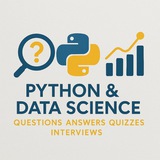Lesson: Mastering Django – A Roadmap to Mastery
Django is a high-level Python web framework that enables rapid development of secure and scalable web applications. To master Django, follow this structured roadmap:
1. Understand Web Development Basics
- Learn HTTP, HTML, CSS, JavaScript, and REST principles.
- Understand client-server architecture.
2. Learn Python Fundamentals
- Master Python syntax, OOP, and data structures.
- Familiarize yourself with virtual environments and package management.
3. Install and Set Up Django
- Install Django:
- Create your first project:
4. Master Core Concepts
- Understand Django’s MVT (Model-View-Template) architecture.
- Work with models, views, templates, and URLs.
5. Build Your First App
- Create a Django app:
- Implement basic CRUD operations using the admin interface.
6. Work with Forms and User Authentication
- Use Django forms for data input validation.
- Implement user registration, login, logout, and password reset.
7. Explore Advanced Features
- Use Django ORM for database queries.
- Work with migrations, fixtures, and custom managers.
8. Enhance Security and Performance
- Apply security best practices (CSRF, XSS, SQL injection protection).
- Optimize performance with caching, database indexing, and query optimization.
9. Integrate APIs and Third-Party Tools
- Build REST APIs using Django REST Framework (DRF).
- Connect with external services via APIs or webhooks.
10. Deploy Your Application
- Prepare for production: settings, static files, and environment variables.
- Deploy on platforms like Heroku, AWS, or DigitalOcean.
Roadmap Summary:
Start with basics → Build core apps → Add features → Secure and optimize → Deploy professionally.
#Django #PythonWebDevelopment #WebFramework #BackendDevelopment #Python #WebApps #LearnToCode #Programming #DjangoREST #FullStackDeveloper #SoftwareEngineering
By: @DataScienceQ 🚀
Django is a high-level Python web framework that enables rapid development of secure and scalable web applications. To master Django, follow this structured roadmap:
1. Understand Web Development Basics
- Learn HTTP, HTML, CSS, JavaScript, and REST principles.
- Understand client-server architecture.
2. Learn Python Fundamentals
- Master Python syntax, OOP, and data structures.
- Familiarize yourself with virtual environments and package management.
3. Install and Set Up Django
- Install Django:
pip install django - Create your first project:
django-admin startproject myproject4. Master Core Concepts
- Understand Django’s MVT (Model-View-Template) architecture.
- Work with models, views, templates, and URLs.
5. Build Your First App
- Create a Django app:
python manage.py startapp myapp - Implement basic CRUD operations using the admin interface.
6. Work with Forms and User Authentication
- Use Django forms for data input validation.
- Implement user registration, login, logout, and password reset.
7. Explore Advanced Features
- Use Django ORM for database queries.
- Work with migrations, fixtures, and custom managers.
8. Enhance Security and Performance
- Apply security best practices (CSRF, XSS, SQL injection protection).
- Optimize performance with caching, database indexing, and query optimization.
9. Integrate APIs and Third-Party Tools
- Build REST APIs using Django REST Framework (DRF).
- Connect with external services via APIs or webhooks.
10. Deploy Your Application
- Prepare for production: settings, static files, and environment variables.
- Deploy on platforms like Heroku, AWS, or DigitalOcean.
Roadmap Summary:
Start with basics → Build core apps → Add features → Secure and optimize → Deploy professionally.
#Django #PythonWebDevelopment #WebFramework #BackendDevelopment #Python #WebApps #LearnToCode #Programming #DjangoREST #FullStackDeveloper #SoftwareEngineering
By: @DataScienceQ 🚀
❤1
